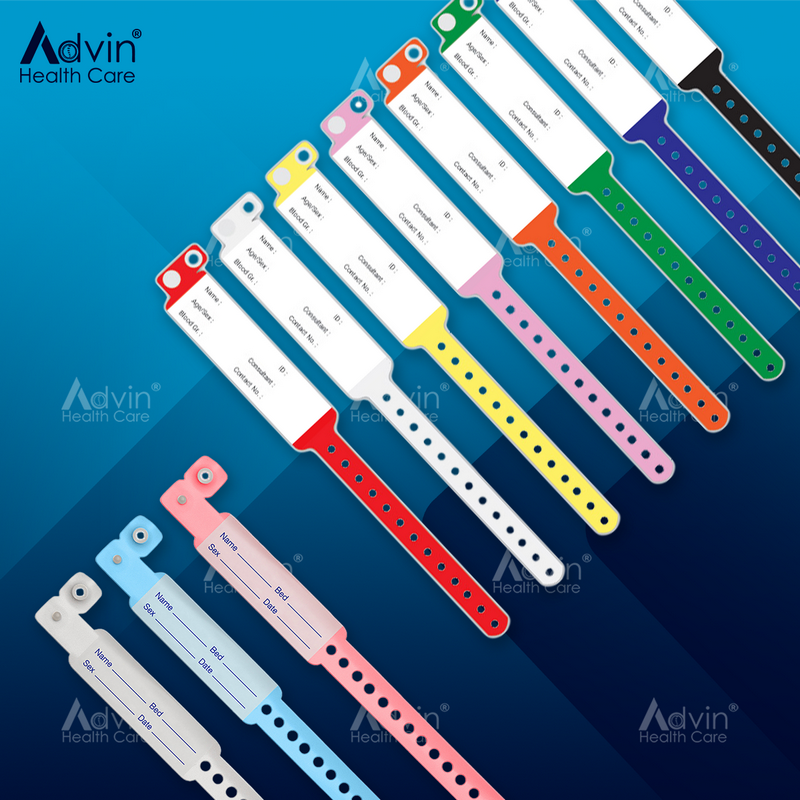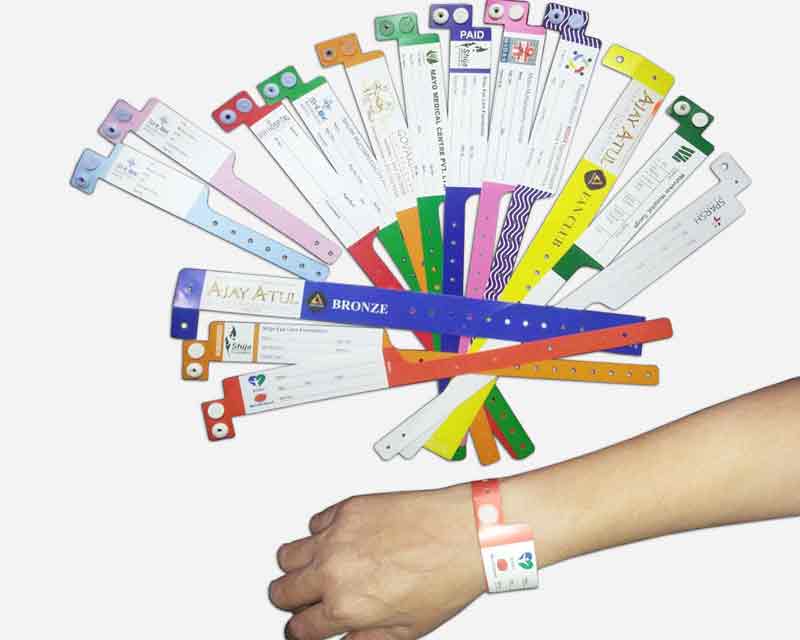Understanding the Advanced Improvements Behind the Patient Identification Band
Understanding the Advanced Improvements Behind the Patient Identification Band
Blog Article
A Comprehensive Guide to Patient Identification Band as a Vital Medical Supply
In the huge landscape of medical care, Patient Identification bands have actually become an important tool (patient identification band). These bands, overflowing with crucial data, serve as the first line of defense versus clinical mistakes and make sure seamless Patient care. As we start to discover these clinical materials detailed, we discover the complexities of their style, usage, and effect on Patient safety, while meaning the assurance they hold for future clinical methods
The Function of Patient Identification Bands in Healthcare
The value of Patient Identification bands in healthcare can not be overemphasized. These easy wristbands offer as the main approach of making certain Patient identity, reducing the risk of clinical errors and boosting general Patient safety. Patient Identification bands offer a system of balances and checks, a fail-safe versus potential errors, and a constant suggestion of the private behind the therapy.
Decoding the Info on Patient Identification Bands
While they might appear simple at a glimpse, Patient Identification bands lug important info that can greatly affect the training course of a client's care. These bands typically display the Patient's name, date of birth, and an one-of-a-kind identifier, such as a medical record number. These essential pieces of info make certain appropriate Patient Identification, stopping clinical errors. Some bands may additionally include important medical informs, such as allergic reaction information, which can be critical in avoiding negative responses. In addition, the barcode found on these bands can be scanned to access the Patient's electronic wellness record, giving a wide range of details to medical care companies. Recognizing the information on these bands is important for reliable and secure Patient treatment.
Different Kinds Of Patient Identification Bands: A Closer Appearance
In the world of Patient Identification, there are a number of kinds of bands that offer distinct purposes. Barcode Identification Bands, RFID Tag-based Bands, and Color-Coded Patient Bands are the key classifications - patient identification band. Each kind offers one-of-a-kind functions and advantages, which will certainly be analyzed in the complying with areas
Barcode Identification Bands
Supplying a substantial enhancement in Patient safety and security, barcode Identification bands have become an important instrument in the medical field. These bands store important Patient data in a barcode format that's rapidly available with a check. Importantly, these bands have substantially decreased clinical errors and boosted Patient safety and security.
RFID Tag-based Bands
Another cutting-edge strategy in Patient Identification is using RFID Tag-based bands. These bands use Superhigh frequency Identification (RFID) innovation to provide a secure form of Patient Identification. Unlike barcodes, RFID tags can keep a lot more information and can be checked out without direct view. This implies that health care experts can access crucial Patient info, also if the band is obscured by clothes or bed linen. RFID tags can be reprogrammed with updated details as required, boosting their capability. These bands can be extra pricey than other types of Identification, and there are personal privacy worries connected with the use of RFID innovation. In spite of these difficulties, RFID tags offer significant possibility for enhancing Patient safety and efficiency in health care.
Color-Coded Patient Bands
Color-coded Patient bands stand as a basic yet efficient tool in Patient Identification. These bands, prevalent in healthcare facilities and centers, utilize various shades to show various Patient problems, threats or allergic reactions, ensuring instant recognition by medical care specialists. Therefore, the color-coded Patient band system is a vital element of Patient safety and security and effective healthcare delivery.

Usage of Patient Identification Bands: Protocols and procedures
In healthcare setups, the use of Patient Identification bands plays a critical role in guaranteeing Patient safety and security and reducing clinical errors (patient identification band). These bands, generally made of sturdy, hypoallergenic product, are attached to the Patient's wrist or ankle joint, displaying vital details such as name, date of birth, and an one-of-a-kind identifier. In senior treatment, 2 bands might be made use of for clients with dementia to guarantee appropriate Identification.
The Effect of Identification Bands on Patient Security
Identification bands play a vital role in keeping Patient safety in healthcare setups. Their usage can significantly reduce clinical mistakes by making sure that the right Patient obtains the appropriate treatment. In addition, these basic devices add to improving the quality of treatment by giving an extra layer of verification to Patient identities.
Reducing Medical Errors
Patient Identification bands have actually emerged as an invaluable tool in considerably reducing these mistakes. Crucially, these bands guarantee that every Patient is correctly matched with their clinical records, examinations, and therapies, thereby significantly lowering the danger of clinical mistakes. By making certain precise Patient Identification, these bands add to enhanced Patient safety, constructing trust fund and confidence in the health care system.
Making Certain Appropriate Therapy
Guarding Patient safety and security, Identification bands play a critical duty in making certain the correct management of treatments. They offer an easy yet efficient method for correctly recognizing individuals and matching them to their clinical records. This decreases the risk of therapy mistakes, particularly in high-pressure situations where blunders can have serious from this source effects. These bands contain vital info such as the Patient's name, date of birth, and one-of-a-kind Identification number. Consequently, they help with precise cross-referencing with electronic wellness records, prescription orders, and step-by-step routines. In effect, the possibility of misdiagnosis, medicine errors, or procedural mix-ups is substantially minimized. Fundamentally, Patient Identification bands function as an essential safeguard in the health care setup, significantly adding to Patient safety and security and making sure correct treatment.

Enhancing High Quality Care
While they might appear trivial, patient Identification bands greatly boost the quality of care offered in medical care settings. They are an essential tool in making sure Patient safety and security due to their capacity to supply prompt access to crucial details. The fostering of Patient Identification bands is, for that reason, a necessary step in all health care environments.
Discovering the Future of Patient Identification Bands in Clinical Technique

Final thought
Patient Identification bands play an important duty in medical care, making certain precise Patient Identification and lowering clinical mistakes. As clinical techniques proceed to evolve, Patient Identification best site bands will certainly stay a critical component of the healthcare system.
While they may seem easy at a glimpse, Patient Identification bands bring essential details that can substantially influence the course of a person's treatment.Color-coded Patient bands stand as a basic yet reliable tool in Patient Identification.In medical care setups, the usage of Patient Identification bands plays an essential duty in making sure Patient safety and security and reducing medical click over here now errors. In essence, Patient Identification bands serve as an essential guard in the medical care setup, considerably contributing to Patient safety and security and making sure correct treatment.
Patient Identification bands play an important function in healthcare, ensuring precise Patient Identification and lowering clinical errors.
Report this page